We tried Dyper's eco-friendly diaper subscription service—is it worth it?
Are compostable diapers the next big thing?
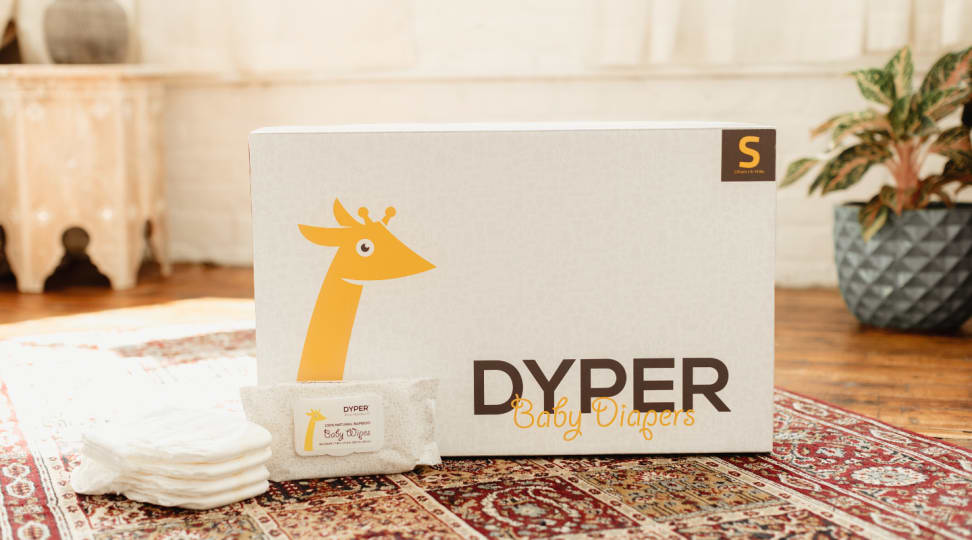 Credit:
Dyper
Credit:
Dyper
Recommendations are independently chosen by Reviewed's editors. Purchases made through the links below may earn us and our publishing partners a commission. Prices were accurate at the time this article was published but may change over time.
You don't have to be a parent to know that babies and toddlers go through a lot of diapers until they're successfully potty-trained.
While some parents opt for reusable cloth diapers that need to be washed, many—my family included—rely on single-use, disposable diapers that get tossed into the trash. It adds up to a serious environmental cost. According to the EPA, single-use diapers add 4.2 million tons of waste to landfills annually.
Enter subscription service Dyper to the rescue. Dyper claims its diapers are biodegradable and compostable, sources its materials from responsible sources, and avoids chemicals, prints, or scents to produce its single-use diapers. For many working families and caregivers, the convenience factor of disposable diapers is non-negotiable. Dyper wants to provide the ease of disposable diapers without the environmental cost.
To test out whether these Earth-friendly compostable diapers could keep my toddler dry and happy, my family tried Dyper for almost a month. Here's how it went.
What is Dyper?
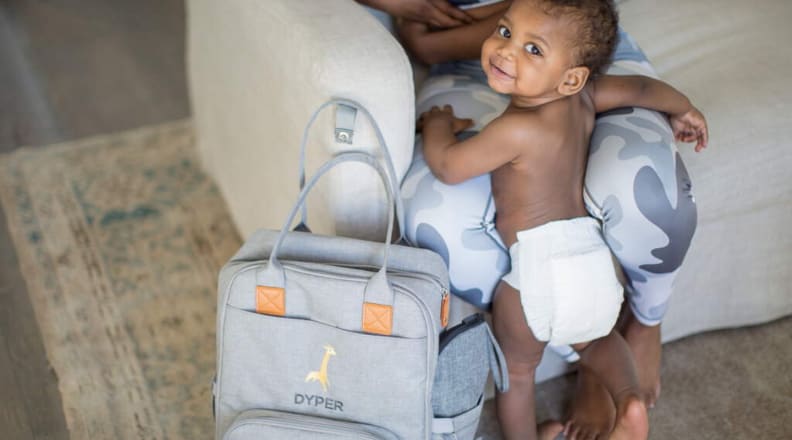
Dyper makes other baby care products like wipes and diaper rash cream.
One of the major differences between Dyper and other eco-conscious diaper brands is that these diapers can be composted. The company partners with TerraCycle for their ReDyper composting program. When you subscribe to Dyper, you can opt-in (or opt-out) of Dyper's composting program. ReDyper subscribers will receive a "specially designed box" to place soiled diapers in. When the box is full, a prepaid mailing label can be downloaded from the Dyper Composting Program page on the TerraCycle website. This really makes it easy for parents who want to compost diapers, but the program is not included with the $80 box of diapers and costs an additional $50 per month.
Additionally, when you buy a box of Dyper's, the company, in turn, uses that money to purchase carbon offsets. You can think of carbon offsets like a trade between a company and the environment. Dyper purchases carbon offsets, which are used to fund environmentally-friendly projects like reforestation efforts.
How does Dyper’s subscription work?
One thing to know upfront is that Dyper subscriptions cost $80 no matter what size you order or quantity you purchase. Shipping is free, however, tax will be added to the total cost and is calculated based on where you live. Orders can be placed on the Dyper website or using the Dyper app, available for download on iOS and Android devices. The diapers ship within two to three days of placing an order and it takes less than a week for the first box to arrive at your door.
So, what size should you order? The company offers five different diaper sizes. The number of diapers included in each box is based on how much your child weighs:
- Newborn (10 pounds & under): 260 diapers
- Small (6-16 pounds): 220 diapers
- Medium (13-22 pounds): 180 diapers
- Large (20-31 pounds): 140 diapers
- Extra Large (28 pounds and up): 100 diapers
I ordered the large size for my 22-month-old son. At just 23 pounds, he’s pretty petite and lean for his age. The sizing is pretty accurate, although the diapers’ elastic bands were just ever so loose around his slender thighs. I probably could’ve sized down to the medium and it would’ve fit him fine but I made sure to fasten the diapers on the tightest setting each time to avoid any messes.
The service is set up so that you receive a new box every four weeks but you can control the delivery frequency ranging from every two weeks up to 12 weeks. If you run out of diapers before your next delivery, you can take advantage of Dyper’s SOS service, where you can request an emergency delivery to arrive at your front door in as little as four hours.
However, at the time of publication, this service is not available everywhere and can only be used twice per year, per subscription. Subscriptions can be cancelled at any time.
What are Dyper’s made from?
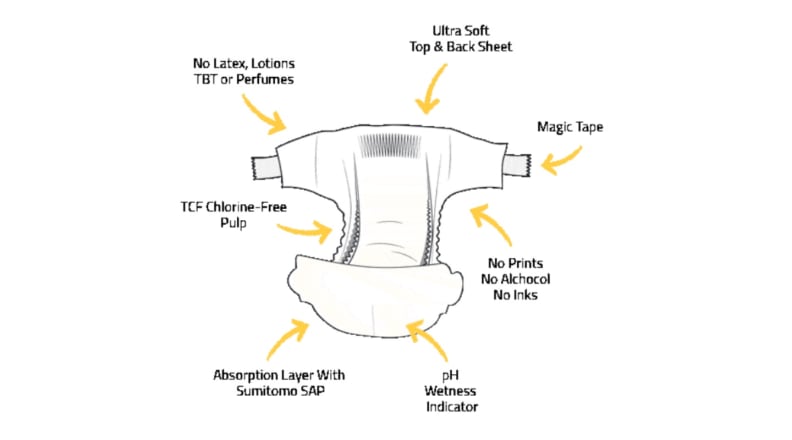
The diapers are made without PVC, chlorine, phthalates, and other chemicals.
The diapers are bamboo-based and are made without chemicals like chlorine, latex, alcohol, perfumes, PVC, lotions, TBT (tributyltin), or phthalates. You've probably heard some of these chemical buzzwords before—but should you be worried about them? Ingredients like phthalates have been linked to asthma, while other studies show that the materials in most of today's disposable diaper brands are "safe" and "extensively tested.”
But the diaper aisle is full of choices and the decision can be deeply personal for parents and caregivers. However, the appeal of chemical-free and planet-friendly diapers is a growing trend for consumers.
According to Dyper, the diapers are made with perforated viscose from bamboo that is "odor resistant" and "more breathable" than other diaper materials. And then there's the eco-friendly aspect of bamboo—it's sustainable and renewable. Even the clear bags the diapers are packaged in are made with biodegradable materials.
Since Dyper doesn’t use ink to make its diapers, there aren’t any fun and colorful prints to choose from. Selfishly, the prints and designs make diaper time more fun for me and I’d love to see them incorporated into future diapers. But if I’m being real, the way a diaper looks is more for me than my son, anyway.
How it went for us
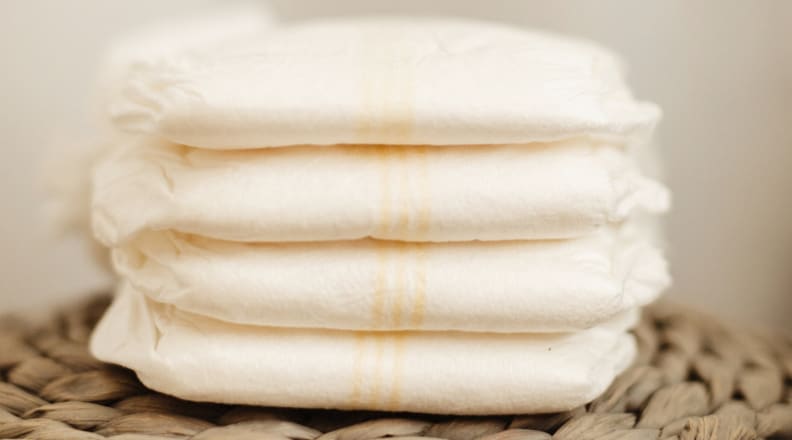
Dyper makes soft and plush diapers that didn't give my son any rashes, but the diapers take on moisture easily and bulk up quickly.
My experience with Dyper was pretty uneventful—there were no major blowouts and they didn’t cause my son any diaper rash or cause any skin irritations. However, one of the first things I noticed about Dyper was the composition of the diaper itself. It’s much fluffier and fuller than similar diaper options like Pampers Pure and Honest, which are fairly slim and thin yet still absorbent. The diaper is soft to the touch and feels almost like a plush cloth rag.
Dyper claims to use a "micro perforation process" which circulates fresh air through the diapers to combat too much moisture. While they say the diaper absorbs nearly two times as much as traditional big brand diapers, I didn't personally find this to be the case.
Throughout the day, I noticed my son’s diaper filled up pretty quickly and felt bulkier than I would’ve expected—more so than it does when using our go-to brand of diapers from Target's up & up line.
Working from home, I probably change my son’s diaper more frequently than I should, but I felt like I had no choice when using Dyper’s bamboo diapers. While they fit fairly well and looked good, the diapers took on a lot of moisture—and fast. (Just like most other diapers, they are white and have a wetness indicator strip that turns from yellow to blue when the diaper is soiled.)
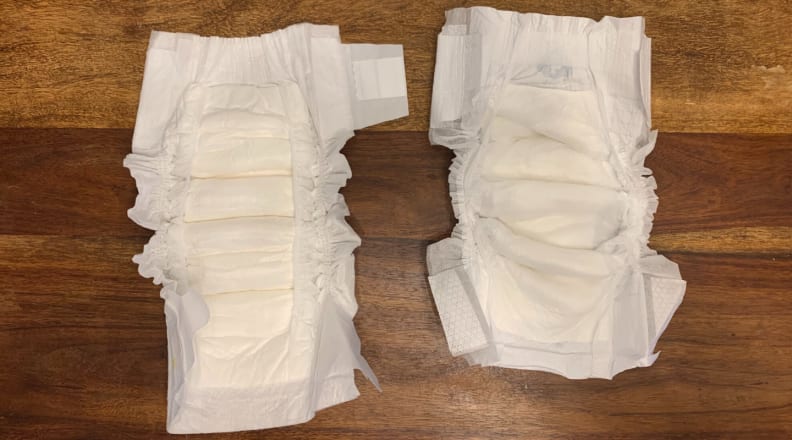
In general, Dyper is bulkier than your average diaper. On the left is a picture of Dyper's size large diaper (20-31 pounds), and on the right is Target's Cloud Island Size 4 diaper (22-37 pounds).
We went through a box of 140 large-sized diapers in about 20 days. That works out to roughly seven diapers a day, not including the overnight diaper we put on him before bedtime. I’m no math whiz, but the box works out to about $0.57 per diaper. While I love the idea of taking part in Dyper's composting program, my bank account is less enthusiastic about spending $130 on diapers each month.
Is it worth it?
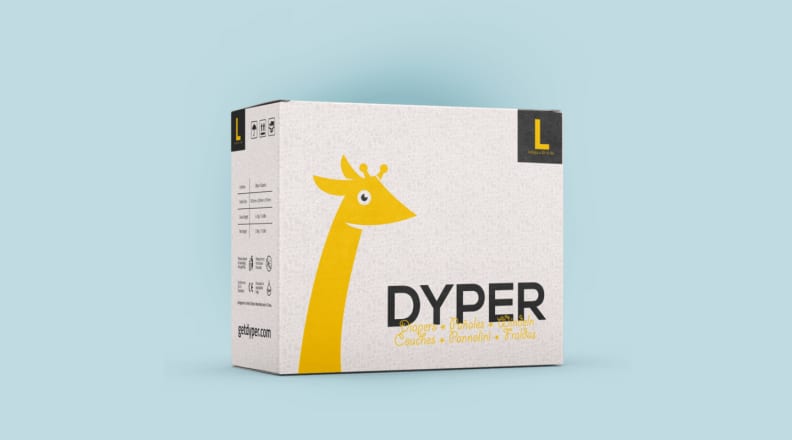
While I love Dyper's mission, I'd love to see more companies follow suit to make compostable, eco-friendly diapers more affordable for all parents and caregivers.
It’s hard for me to know whether my kid just urinates a lot or the diapers aren’t as absorbent as I hoped, but the Dyper subscription service is a bit too pricey for my pocketbook based on how quickly my almost 2-year-old went through a box of them. These days, you’ve got more options for eco-friendly and (mostly) chemical-free diapers from companies like Honest and Seventh Generation. Even other brands like Pampers have pulled the trigger on certain ingredients like latex, parabens, PVC, BPA, and other chemicals from its diapers.
However, none of those brands makes a compostable diaper and that’s what sets Dyper apart from the rest. If you’re looking for a diaper that’s better for the environment than most other options—and you’re going to commit to properly composting them via Dyper's composting program—then Dyper just might be the way to go.





